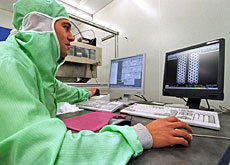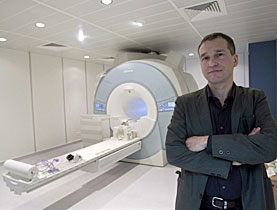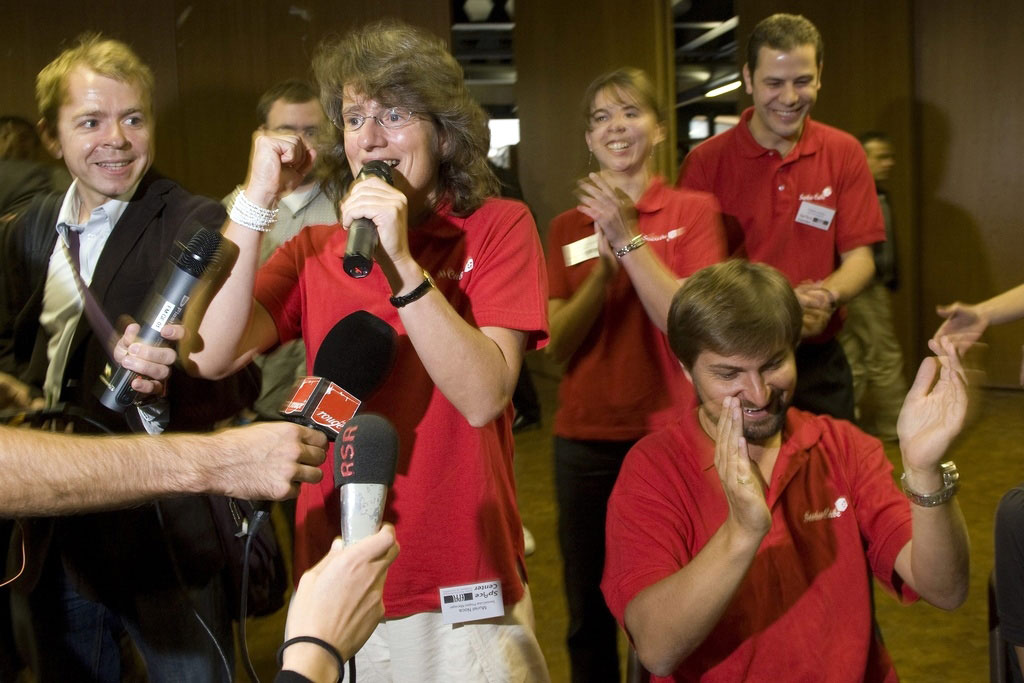Science of the small has big potential

Nanotechnology, a science dealing with minute particles, has huge potential for Switzerland, according to a report.
The first ever Swiss Nanotech Report into the domestic industry was not yet able to come up with figures for the present situation, but experts agreed the country played a leading global role.
Nanotechnology is the manipulation of atoms and molecules, with one nanometre being around one millionth the diameter of a pinhead.
The discipline, which crosses the fields of chemistry, physics and biology, is already used in items ranging from sunscreens, where particles makes the cream more transparent, to minuscule computer chips.
Heinz Müller of the report’s steering committee explained that because of the technology’s existing integration in Swiss industry, it had not been easy to come up with figures.
“It is hard to quantify because most of the industries use nanotechnologies in their regular processes and to improve products, so it’s not that they use completely new products with nanotechnology,” he told swissinfo.ch at the report’s media presentation in Zurich on Tuesday.
This made it hard to assess which part of a company’s revenue came from nanotech, said Müller, a professor and a patents expert at the Swiss Federal Institute of Intellectual Property.
Innovation
But he said that the Swiss industry was healthy, especially in research, where some university spin-offs have started up using nanotech ideas. “I think we’ll see this figure increase in the next few years,” Müller said.
The report, drawn up by a broad coalition of authorities and scientific institutions, as well as economic players such as computer giant IBM, pointed to the high number of nanotech patent applications per capita for Switzerland as an important innovation indicator.
A table shows how Switzerland outstrips big players Japan and the United States in this area. In 2006, Switzerland had ten nanotech patent applications per one million inhabitants.
The study also highlighted the conditions in Switzerland which encouraged research and development, such as high quality academic institutions, enough funding and the ability to attract top people.
Switzerland has been a pioneer in the science of the small, having discovered its potential early, the authors argue.
This was probably encouraged by the long tradition of watchmaking and other precision instruments.
IBM, which has its European research base near Zurich, is investing heavily in nanotechnology for its computer chip technology.
“It’s important to point out how Switzerland plays a leading role in the area of nanotechnology,” said director Matthias Kaiserswerth of the report.
IBM helped put Switzerland on the nanotech map after developing the scanning tunnelling microscope, which won its inventors a Nobel prize in physics in 1986, in its Swiss laboratories.
“This was the first time that one could actually visualise things at an atomic level and really laid the foundation for much of the work that’s going on in the field of nanotechnology,” Kaiserswerth told swissinfo.ch.
Nanotech work is continuing. IBM and the Federal Institute of Technology in Zurich have formed a partnership for the SFr90 million ($87 million) Nanoscale Exploratory Technology Laboratory, which will open in 2011, allowing joint and independent research projects.
Potential risks?
Experts say future nanotech uses could lie, for example, in the energy sector in new ways of purifying water or in medicine.
However, concerns have been raised over health risks attached to the technology, mainly from people inhaling these very tiny particles.
In 2006 Switzerland was among the first European countries to publish specific recommendations on nanoparticle exposure at work.
“High tech innovations usually have a potential for danger, we have seen that with nanotechnology, and for a long time in biotechnology and to a certain degree in medical technology,” Müller said.
“And to come up with a reasonable measure of the dangers of the technology might be a task of the near future in Switzerland.”
Experts at the media conference were sure, however, that nanotech’s benefits outweighed any potential downsides and were confident of its great potential.
For Kaiserswerth, it is a fascinating sector. “One of the next waves coming after the information and communication technology revolution is going to be nanotechnology,” he said.
Isobel Leybold-Johnson in Zurich, swissinfo.ch
Nanotech can be defined as research and technology developments at the atomic or molecular level, on a scale smaller than 100 nanometres – one ten thousandth of a millimetre.
Particles and structures of this size differ from their counterparts in the microscopic world as relative surface area of these structures increase enormously and quantum effects occur. This can lead to changes in physical and chemical properties, often leading to improved characteristics e.g. water repellency.
Nanoscience and nanotechnology encompass a range of techniques rather than a single discipline and stretch across the scientific spectrum, touching on medicine, physics, engineering and chemistry.
Current nanotech cluster areas can be found in Basel with its chemicals industries, as well as in Zurich and in the French-speaking part of Switzerland, which have top research institutions, according to the Swiss Nanotech Report 2010.

In compliance with the JTI standards
More: SWI swissinfo.ch certified by the Journalism Trust Initiative




You can find an overview of ongoing debates with our journalists here. Please join us!
If you want to start a conversation about a topic raised in this article or want to report factual errors, email us at english@swissinfo.ch.